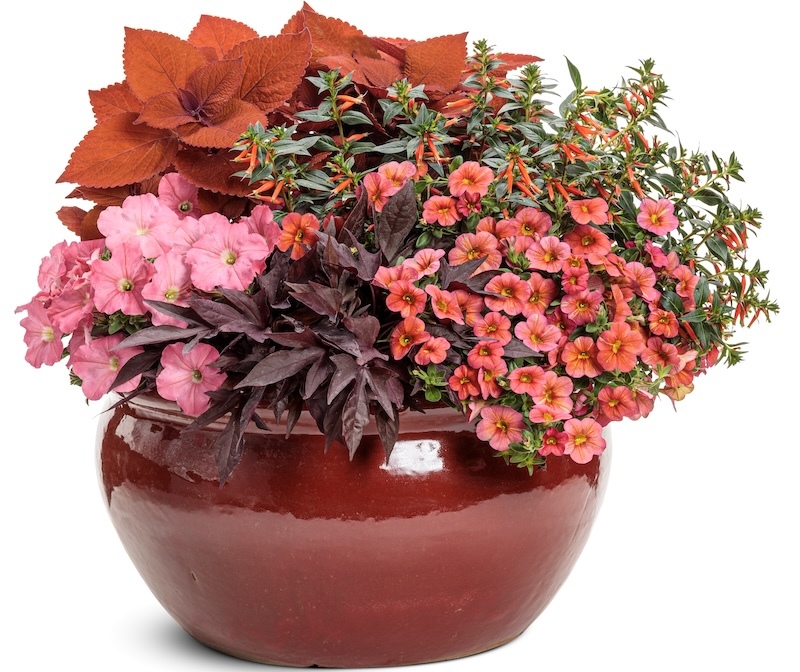Growing Cuphea
Cupheas make interesting statement plants for a garden bed or container. Both new and more experienced gardeners enjoy their easygoing and low-maintenance nature. Pollinators adore the nectar of Cuphea and will continue to feed well into the fall, providing plenty of viewing opportunities for gardeners.

This tender perennial has over 250 species and is native to the warmer climates in North and Central America. The most common varieties of Cuphea sold as tender annuals go by the names ‘Bat-Faced Cuphea’, ‘Mexican Heather’, and ‘Firecracker Plant’.
Planting Cuphea
Cuphea requires full sun and well-draining soil to thrive. Plants need at least 6 hours of direct sunlight, and too much shade may reduce flowering and bushiness. Typically grown as a hot weather annual, Cuphea should not be planted outdoors until nighttime temperatures are above 50 degrees F. If you plan to overwinter your Cuphea plants, they will need to be transitioned inside when the temperatures begin to fall below 55 degrees F at night.

Watering Cuphea
Newly planted Cuphea should be watered 2-3 times a week to give the plants a good start. By midsummer, watering can be reduced to one deep soak a week. Mulch the root zone to not only increase moisture retention, but to also shade and cool the root zone. Use an organic mulch that can decompose like arborist chips or compost, which both aid weed suppression.
Fertilizing Cuphea
To keep Cuphea flowering reliably, apply a diluted liquid fertilizer. Organic products blended for flowers and vegetables, such as fish emulsion or seaweed extract, are ideal. The higher ratio of P (phosphorus) to N (nitrogen) and K (potassium) will support blooming and healthy root development. Apply the feed during a watering session once a month from April to August.
Pruning Cuphea
One of the best attributes of Cuphea is that it is self-cleaning and does not require deadheading or any type of pruning during the growing season. Pinching out the tips of new branches in the early spring will keep the plant dense and bushy. For plants grown as perennials, lightly prune out dead or winter-damaged growth in early spring as new growth is emerging.
Caring For Cuphea in Pots
Grow Cuphea in a container as a single specimen plant or as part of a large mixed seasonal display. Both the container and potting mix must drain well for plants to stay healthy. Fertilize the plants every 2-3 weeks with a diluted liquid feed, such as fish emulsion, seaweed extract, or vermicompost liquid. Regular light feeds will keep the plants vibrantly colored and blooming well into the fall.

Winter Care For Cuphea
Gardeners growing Cuphea outside its hardiness range can take softwood cuttings before winter or move the entire plant indoors before the weather gets cold. Place the plant in bright indirect light from a southwest or southeast window, or grow Cuphea under dedicated LED grow lights.
For overwintering plants in the ground, mulch the root zone with a thick layer of organic material like pine needles or garden straw. The mulch will help insulate the roots during cold snaps and should be removed once new growth emerges in the spring.
Sources: “Cupheas.” Clemson Cooperative Extension. hgic.clemson.edu
